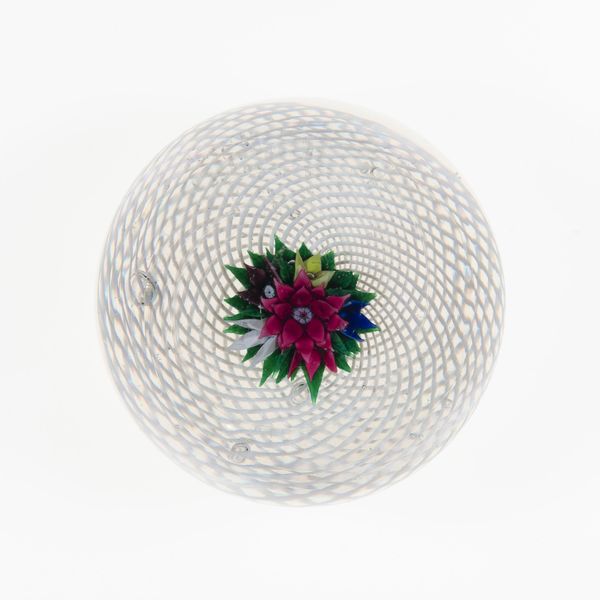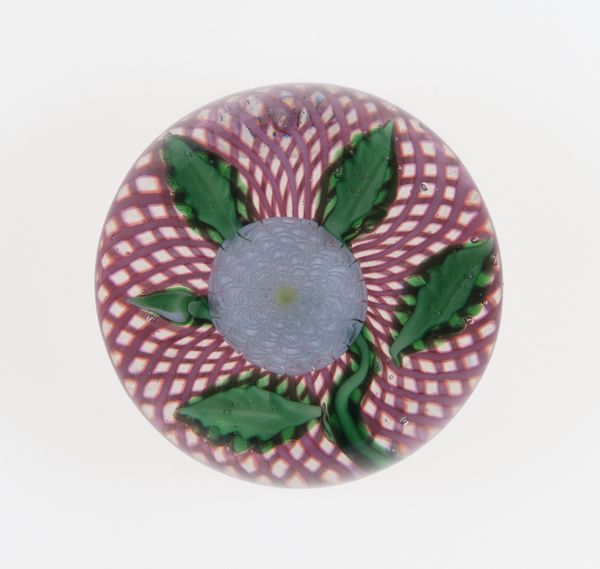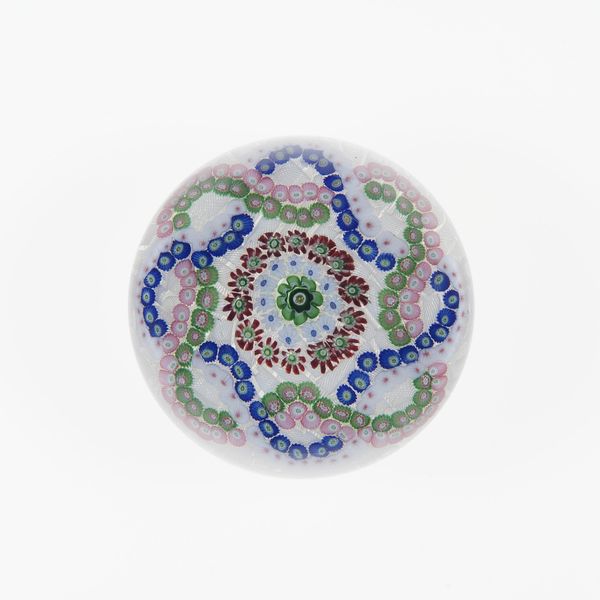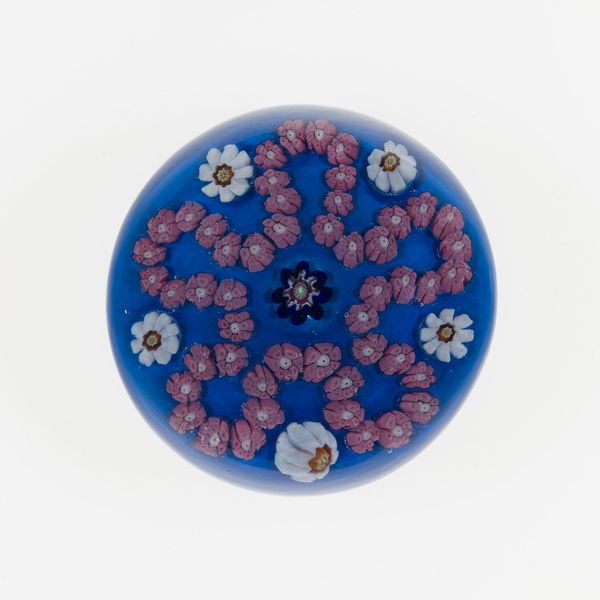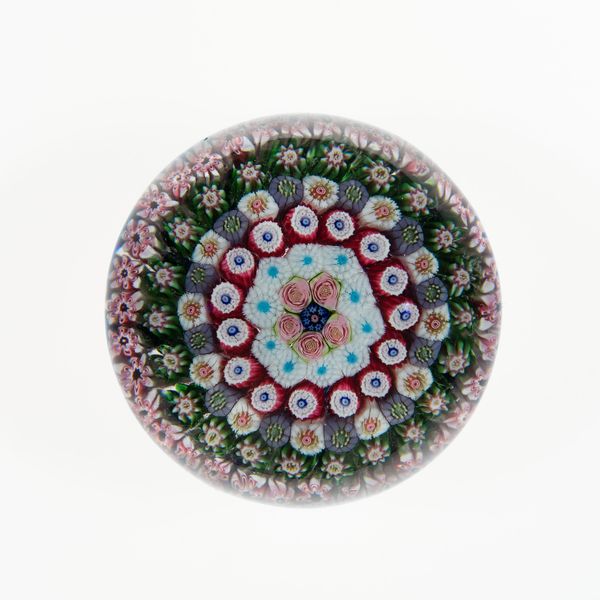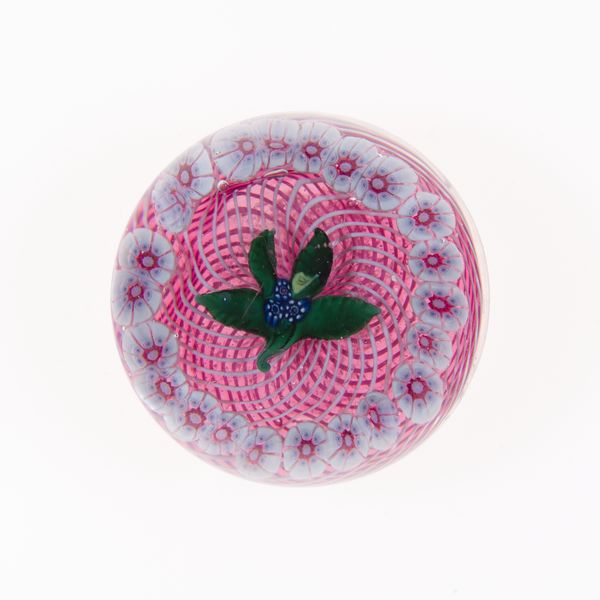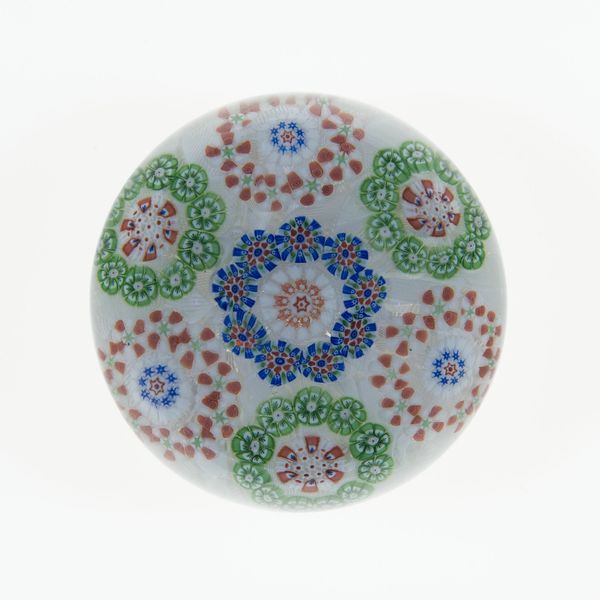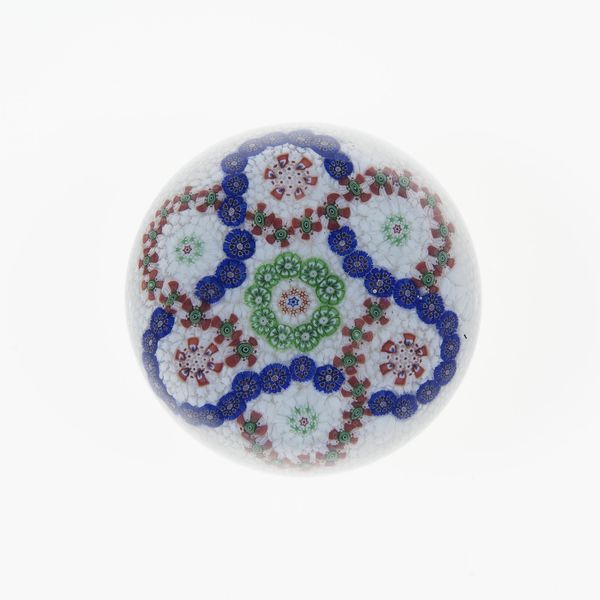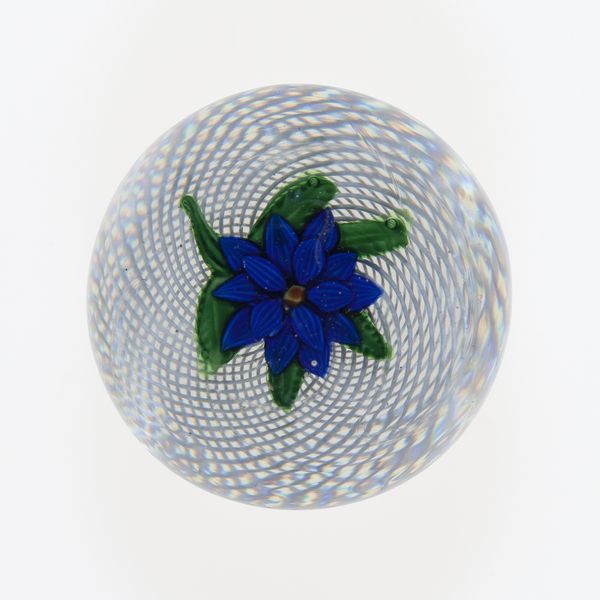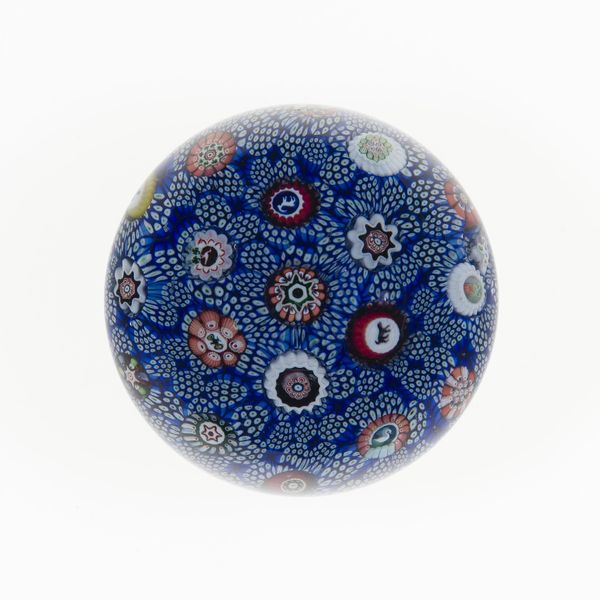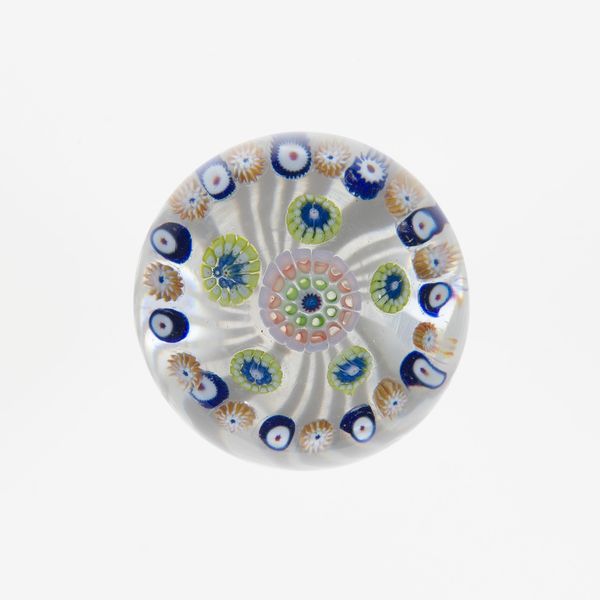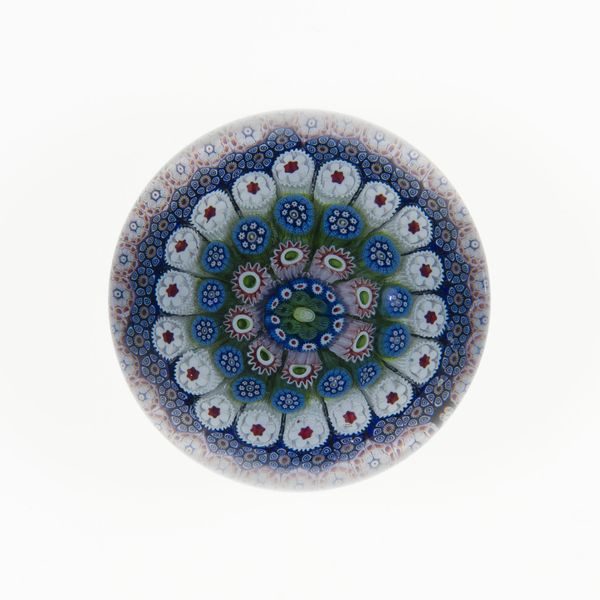
Dimensions: Diam. 7.1 cm (2 13/16 in.)
Copyright: Public Domain
Editor: We are looking at a glass paperweight, made around 1845-1860 by the Compagnie de Saint Louis. It's deceptively simple. A single flower seems suspended within the glass dome, all resting on a hypnotically woven, reddish grid. It's somehow both charming and strangely powerful, a symbol captured and displayed. What sort of cultural moment gave rise to something like this? Curator: Indeed. Consider the 19th-century fascination with nature, bottled and contained. This paperweight emerges in the wake of the Industrial Revolution, a period of dramatic societal shift. The bourgeoisie began to grow in power and in seeking out such items. Note the painstaking detail required to capture a flower, seemingly preserved forever. Isn’t it ironic? It echoes scientific preservation, while also acting as pure decoration. What sort of statement do you think that makes about societal values? Editor: So, it's a kind of trophy, or a symbol of controlling the natural world through artistry and technology? Is it a display of the burgeoning industrial powers through science that’s masked as mere decoration? Curator: Precisely! Think about the public exhibitions popular at the time, displays of technological and natural wonders designed to awe and inspire. The paperweight condenses that spectacle into a miniature, domestic object. It's art accessible to the emerging middle class and reflects its aspirations. Editor: So, the rise of this new technology directly influences decoration? Curator: Absolutely! A lot can be said about an image’s origin; knowing what gave way to its creation makes you question its values, its purpose, and why someone made it in the first place. Editor: I'll never look at a paperweight the same way. Thanks.
Comments
No comments
Be the first to comment and join the conversation on the ultimate creative platform.

